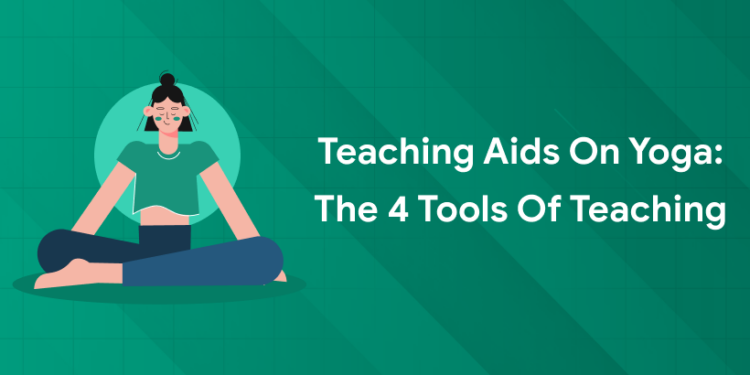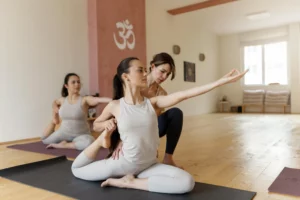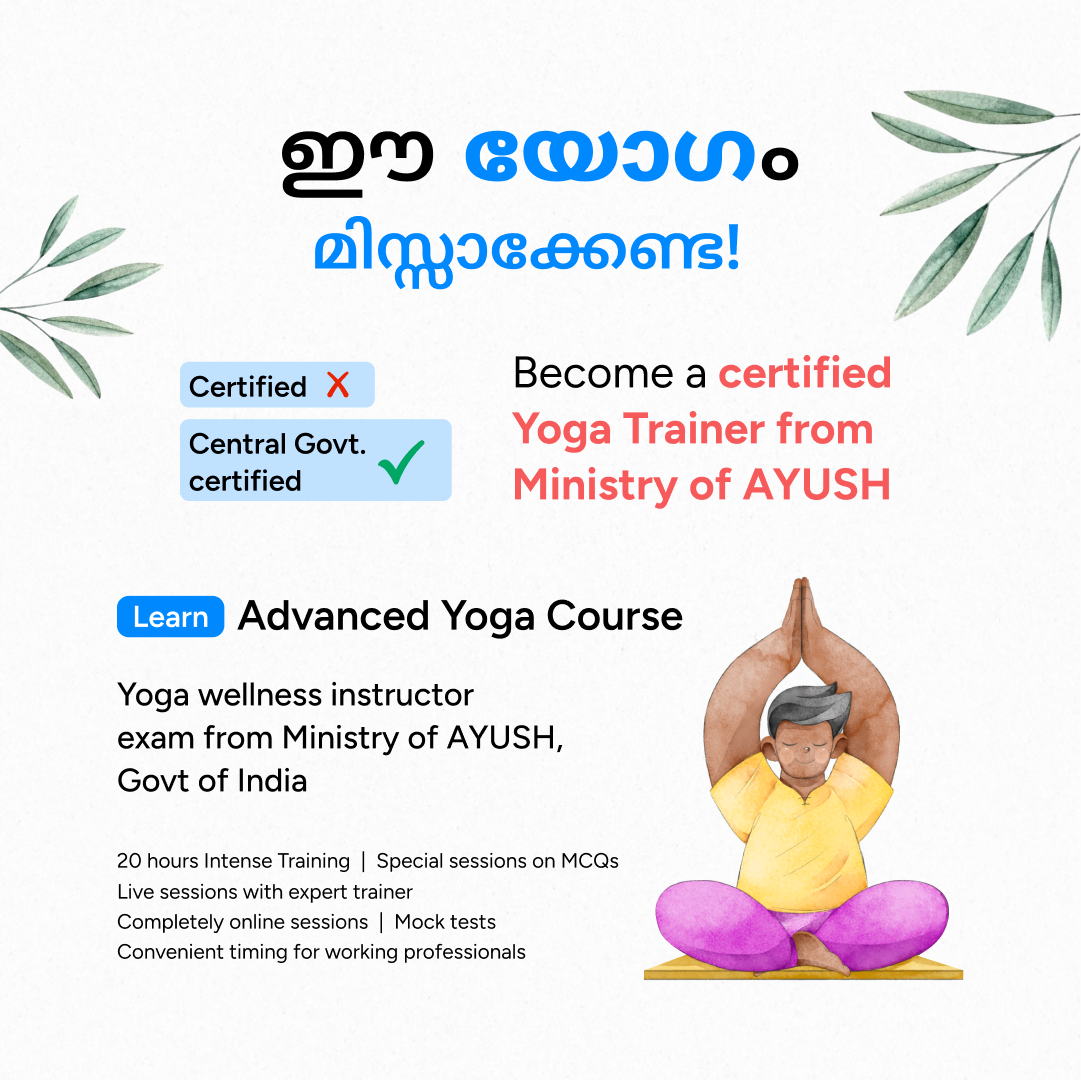Table of Contents
Yoga teaching aids serve numerous intents in yoga instruction. They enhance the learning experience and empower learners to tackle their self-discovery and transformation. By comprising yoga tools, instructors can create engaging and impactful classes that resonate with practitioners of all backgrounds and abilities. In this article we are going to discuss Teaching Aids on Yoga: The 4 Tools of Teaching!
Get Certified! Join Our Yoga Teacher Training Course!
Importance of Teaching Methods In Yoga
Understanding the importance of yoga teaching methods involves the following benefits.
Promote Safety
Instructors can emphasize proper alignment, technique, and changes, lowering the chance of injury during practice by using yoga tools.
Enhance Understanding
Assist in conveying complex concepts and techniques in yoga more effectively, catering to diverse learning styles.
Increase Engagement
Interactive teaching methods, such as group discussions, partner work, and experiential learning activities, promote active participation and engagement with practice.
Personalized Experience
Making teaching approaches to students’ particular needs and talents results in a more personalized and diverse yoga experience that promotes growth and self-awareness.
Sustain Motivation
Engaging teaching approaches serve to keep students inspired and passionate about yoga, encouraging a lifelong commitment to personal growth and well-being.
Join Now for Montessori Teacher Certification Course!
Teaching Aids on Yoga: The 4 Tools of Teaching
1: Which of these is the primary goal of yoga practice?
Yoga teaching tools are crucial in guiding practitioners to learn and improve their skills. The range of tools available, from mats to updated technology, continues to expand, enhancing the learning experience for students.
Visual Tools
Use visual aids for illustrating yoga postures, alignment principles, and anatomical structures. These tools include interactive videos demonstrating postures and methods that display various asanas. Students can more clearly and precisely comprehend the subtleties of each position by employing visual assistance.
Visual aids that promote a greater comprehension of the complex nuances of yoga philosophy can also include diagrams that highlight the flow of energy, or prana, throughout the body and depictions of the chakras. Incorporating visual elements into yoga instruction can cater to different learning styles and help students retain information more effectively.
Hands-On Adjustments and Verbal Cues
By providing gentle corrections and encouragement, instructors create a supportive learning environment where students feel empowered to explore their bodies and capabilities fully. To direct students toward appropriate alignment and manifestation, the human touch of hands-on corrections and verbal guidance is still helpful. Teachers use verbal instructions and feedback to help students become more aware of their posture, avoid injuries, and improve their sense of balance.
Besides, verbal instructions are used to remind trainees to breathe mindfully, exercise, and remain in the now. Through vocal guidance and live corrections, teachers provide a transforming experience that goes beyond the physical aspects of yoga. They support students’ growth and self-awareness both on and off the mat.
Usage of Props and Equipment
Yoga equipment and props consist of yoga mats, blocks, straps, and bolsters are essential instruments that support yogis of all skill levels in their practice. They are used to do stretches, adjust poses, and strengthen alignment.
Props are particularly useful for beginners who might have trouble with flexibility. Also useful for anyone healing from injuries who needs support during their recovery. Yoga instructors can provide a safe space on the yoga mat that encourages experimentation, development, and self-discovery by including props in their courses.
Technology for Yoga Instruction
Technology offers unlimited accessibility to the teachings of yoga, ranging from mobile applications to online courses and instructional videos.
Yoga practitioners can engage in dynamic, deep interactions with the practice of yoga that exceed the boundaries of space and time. You can use several interactive platforms and multimedia content to learn yoga.
Become a Certified Yoga Instructor
Yoga Teacher Training Course by Entri App: Master authentic yoga techniques, earn certification, and build a successful career as a professional yoga instructor.
Join Now!How Entri Assists in Yoga Teaching?
The Entri Yoga Teacher Training Course is designed for students of all levels of experience, from beginning to advanced. The platform offers a comprehensive curriculum that covers all aspects of yoga, including philosophy, history, and many practices.
The lessons are made to be engaging, instructive, and participatory, with a focus on the practical application of yoga principals and methods. The training is given by experienced and certified yoga instructors who are keen to share their expertise with others.
After completing the course, students are issued a certification that allows them to teach yoga professionally. Entri also offers ongoing support and resources to its graduates, helping them to build successful careers as yoga instructors.
Become a Certified Yoga Instructor
Yoga Teacher Training Course by Entri App: Master authentic yoga techniques, earn certification, and build a successful career as a professional yoga instructor.
Join Now!Frequently Asked Questions
1. What are yoga teaching aids?
Ans: Yoga teaching aids are tools and techniques used by instructors to enhance learning, improve understanding, and provide a supportive environment for students. These include visual aids, hands-on adjustments, props, and technology.
2. Why are teaching aids important in yoga?
Ans: Teaching aids help instructors promote safety, enhance student engagement, provide a personalized experience, and sustain motivation. They also make complex yoga concepts easier to understand.
3. What is the Entri Yoga Teacher Training Course?
Ans: The Entri Yoga Teacher Training Course is a structured program for students of all levels. It covers yoga philosophy, history, techniques, and teaching methodologies, with guidance from experienced instructors.
4. Can I take the Entri Yoga Training Course if I am a beginner?
Ans: Yes, the course is designed for both beginners and experienced practitioners, with structured lessons to help all levels progress effectively.

























